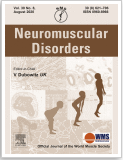 Neuromuscular diseases constitute a heterogeneous group both at the clinical and genetic level. It sometimes happens that the borders between the nosological sets within which they are usually classified are not very watertight, even porous. This is called an overlap. From this point of view, pathologies such as autoimmune myasthenia gravis, or congenital myasthenic syndromes, and / or mitochondrial pathologies can mimic the symptoms or signs of many other neuromuscular diseases thus leading to a long diagnostic wandering.
Neuromuscular diseases constitute a heterogeneous group both at the clinical and genetic level. It sometimes happens that the borders between the nosological sets within which they are usually classified are not very watertight, even porous. This is called an overlap. From this point of view, pathologies such as autoimmune myasthenia gravis, or congenital myasthenic syndromes, and / or mitochondrial pathologies can mimic the symptoms or signs of many other neuromuscular diseases thus leading to a long diagnostic wandering.
In an article published in June 2020, researchers report the observation of a young patient, without a notable family history, initially diagnosed with congenital myasthenic syndrome on the basis of clinical data (ptosis, ophthalmoplegia and diplopia appeared at the age of six; exertion intolerance, weight loss), electrophysiological (positivity of jitter on a single fiber study but without real associated decrement) and immunological (absence of auto-antibodies). The first genetic studies, targeting first genes for congenital myasthenic syndromes and then a larger panel of genes (whole exome), were found to be negative. The muscle biopsy, by revealing numerous fibers negative for cytochrome oxidase (COX), made it possible to reorient the search for the diagnosis on the right path. A mutation (deletion of the MT-TY gene) has in fact been identified in the patient’s mitochondrial DNA. This observation once again reminds us of the limitations of high throughput sequencing (NGS) conducted at the single exome scale.
